Amish Cinnamon Bread: A Classic Recipe with Rich History
There’s something magical about the smell of Amish Cinnamon Bread baking in the oven—warm, sweet, and comforting. This beloved recipe has been passed down for generations, bringing families together with its soft texture and rich cinnamon swirl.
In this article, we’ll cover everything you need to know about Amish Cinnamon Bread, from its humble beginnings to foolproof baking tips. Whether you’re a beginner or a seasoned baker, you’ll find useful tricks to make the best loaf possible.
Ready to dig in? Let’s start with what makes this bread so special.
Table of Contents
Table of Contents
Introduction to Amish Cinnamon Bread
What Makes Amish Cinnamon Bread Special?
Unlike regular quick breads, Amish Cinnamon Bread stands out because of its moist crumb and sweet, spiced layers. The secret? A simple buttermilk batter and a generous swirl of cinnamon sugar. Plus, it doesn’t need yeast—just mix, bake, and enjoy.
Another reason people love it? The tradition behind it. Many families have their own versions, often shared between friends as a sign of kindness.
Why This Recipe Stands Out
Some recipes are fussy, but not this one. You don’t need fancy tools or hard-to-find ingredients. In fact, you probably have everything in your pantry right now.
What really sets it apart is the texture—soft, slightly dense, and packed with warm cinnamon flavor. It’s perfect for breakfast, dessert, or even a midday snack.
The magic of cinnamon in baking is well documented in our article about how cinnamon transforms bread recipes, especially in traditional treats like this one.
The History of Amish Cinnamon Bread
Origins of Amish Baking Traditions
The Amish are known for their simple, hearty cooking—and Amish Cinnamon Bread is no exception. This recipe comes from a long tradition of homemade breads baked in wood-fired ovens. Back then, families used basic ingredients like flour, sugar, and spices to create filling treats.
Unlike modern desserts, Amish baking focuses on practicality. Breads needed to last, taste good, and feed many people. That’s why Amish Cinnamon Bread became a staple—it’s easy to make, stays fresh, and pleases everyone.
How Amish Cinnamon Bread Became Popular
Over time, this bread spread beyond Amish communities. Church gatherings, bake sales, and neighborly gifts helped share the recipe. Soon, home cooks everywhere were making their own versions.
What kept it popular? The taste, of course! The soft texture and sweet cinnamon swirl made it a hit. Plus, the recipe adapts easily—some add nuts, others use apples. No matter the twist, the heart of Amish Cinnamon Bread stays the same.
Key Ingredients for Perfect Amish Cinnamon Bread
Best Brands for Quality Results
Not all ingredients are equal. For the best Amish Cinnamon Bread, pick high-quality staples:
- King Arthur flour (consistent texture)
- Domino sugar (fine granules dissolve well)
- Saigon cinnamon (stronger, sweeter flavor)
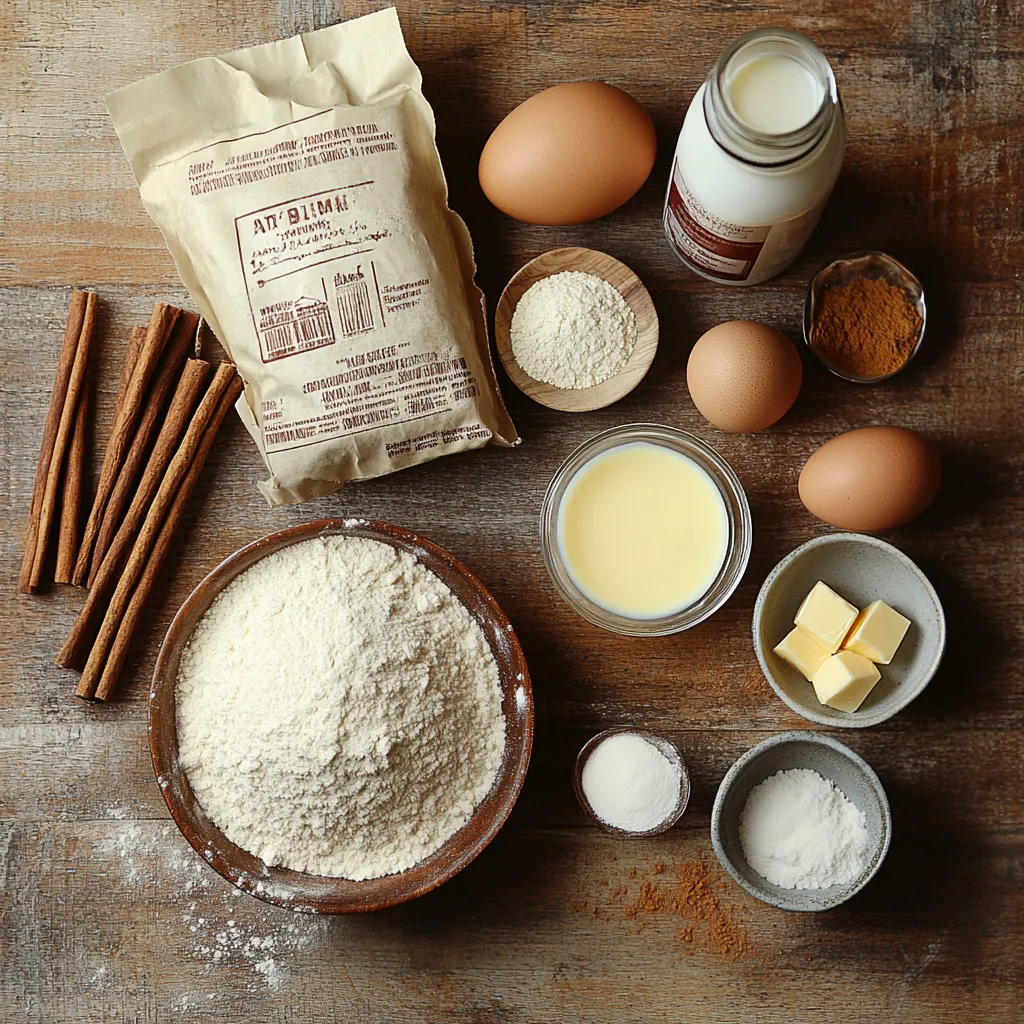
Good ingredients mean better flavor. Don’t skip this step!
Substitutions for Dietary Needs
No buttermilk? Mix 1 cup milk with 1 tbsp vinegar. Need gluten-free? Swap all-purpose flour for a 1:1 gluten-free blend. Even vegan bakers can enjoy this bread—use flax eggs and plant-based butter.
Here’s the full ingredient table:
| Ingredient | Quantity | Notes |
|---|---|---|
| All-purpose flour | 3 cups | Sifted for best texture |
| Sugar | 2 cups | White or brown sugar works |
| Eggs | 2 large | Room temperature preferred |
| Buttermilk | 1 cup | Can substitute with milk + vinegar |
| Cinnamon | 2 tbsp | Adjust for stronger flavor |
| Butter (melted) | ½ cup | Unsalted recommended |
| Baking soda | 1 tsp | Helps with rising |
| Vanilla extract | 1 tsp | Enhances sweetness |
Step-by-Step Amish Cinnamon Bread Recipe
Preparing the Batter
First, grab a large mixing bowl. Whisk together the dry ingredients—flour, sugar, and baking soda. Then, in another bowl, beat the eggs lightly before adding buttermilk, melted butter, and vanilla.
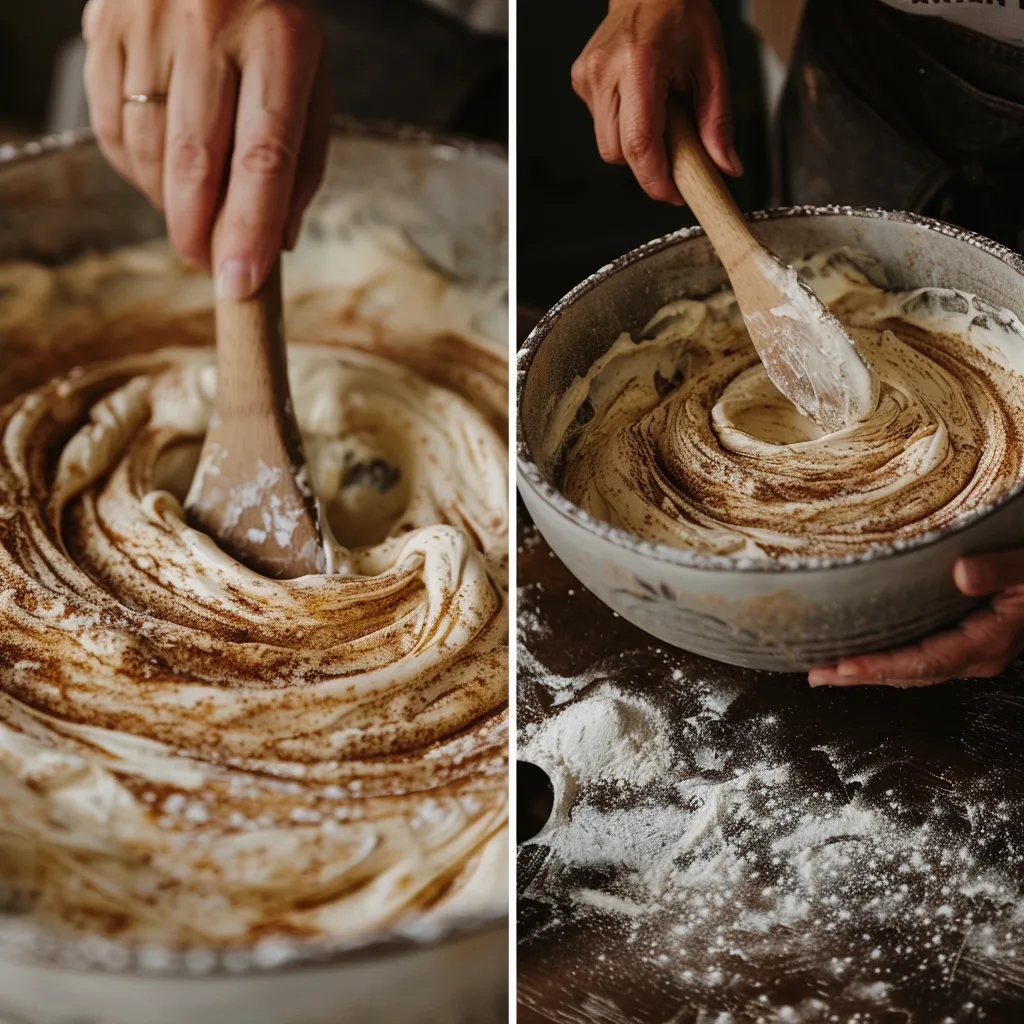
Next, pour the wet mix into the dry ingredients. Stir just until combined—overmixing makes the bread tough. The batter should be thick but pourable. If it seems too stiff, add a splash of milk.
Layering the Cinnamon-Sugar Swirl
Here’s where the magic happens! Pour half the batter into a greased loaf pan. Then, sprinkle a generous layer of cinnamon sugar (mix ¼ cup sugar + 1 tbsp cinnamon).
After that, add the rest of the batter. Top with another cinnamon-sugar layer. For extra flair, drag a knife through the batter to create swirls. This gives every slice that pretty marbled look.
Baking Time and Temperature Tips
Pop the pan into a preheated 350°F oven. Bake for 50-60 minutes. To check doneness, insert a toothpick—it should come out clean.
Pro tip: If the top browns too fast, tent it with foil. Also, let the bread cool in the pan for 10 minutes before transferring to a wire rack. This prevents crumbling.
Common Mistakes and How to Avoid Them
Overmixing the Batter
Some bakers stir the batter until it’s perfectly smooth. Big mistake! Overmixing develops gluten, leading to dense bread. Instead, mix just until no dry streaks remain. A few lumps are fine—they’ll disappear while baking.
Incorrect Oven Temperature
Ovens often lie about their temperature. If your Amish Cinnamon Bread burns on top but stays raw inside, your oven runs hot. Use an oven thermometer to check.
On the other hand, if the bread takes forever to bake, the oven might be too cool. Preheat it for at least 15 minutes before baking.
While this recipe is delicious on its own, you might also enjoy our Tradition and Legacy of Amish Friendship Bread for another easy, crowd-pleasing treat. Both recipes share similar techniques but deliver unique flavors!
Variations of Amish Cinnamon Bread
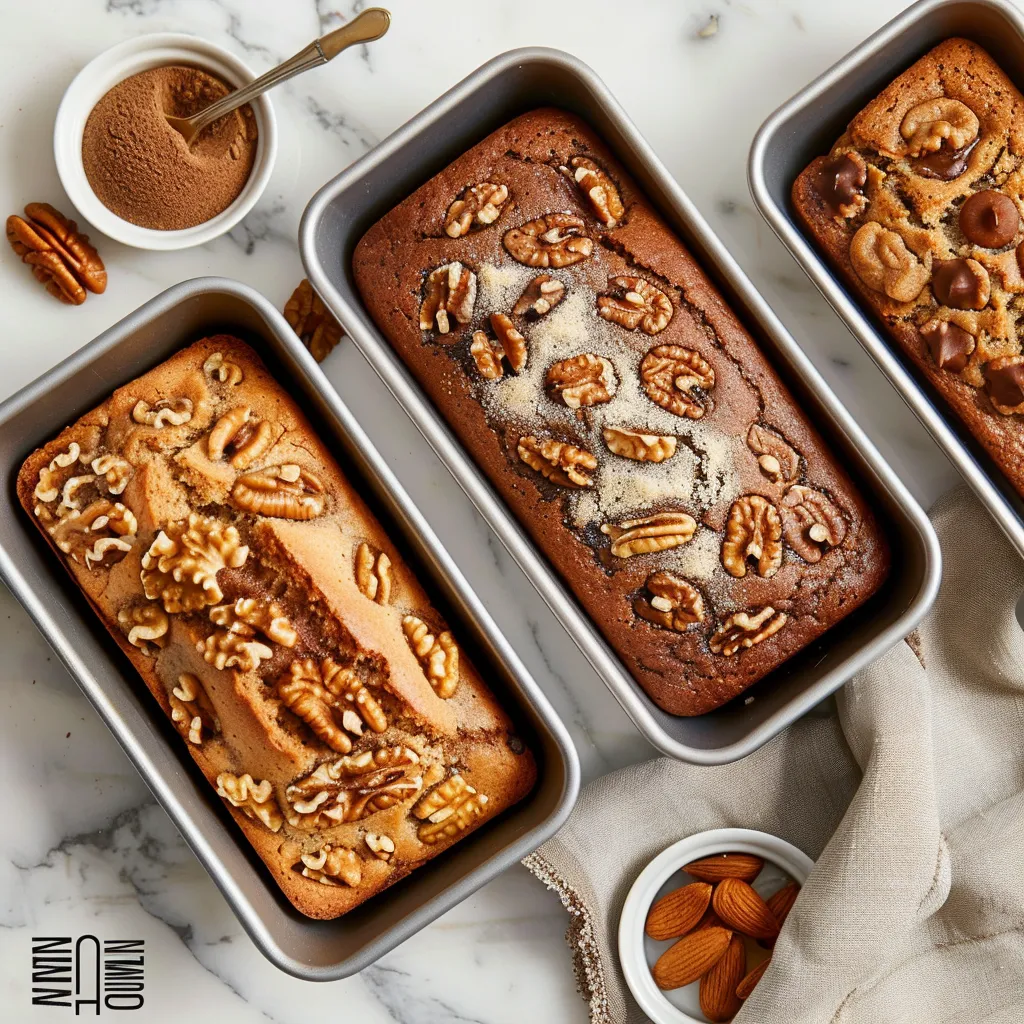
Adding Nuts or Raisins
Want to mix things up? Try tossing in ½ cup of chopped walnuts or pecans. The crunch pairs perfectly with the soft bread. If you prefer chewy bites, raisins or dried cranberries work great too. Just fold them into the batter right before pouring.
For extra flavor, toast the nuts first. It brings out their natural oils and makes them crispier. Either way, these add-ins take your Amish Cinnamon Bread to the next level.
Gluten-Free and Vegan Versions
No need to miss out if you have dietary restrictions. For gluten-free, use a 1:1 flour blend instead of regular flour. The texture might be slightly denser, but still delicious.
Vegan? Swap eggs for flax eggs (1 tbsp ground flax + 3 tbsp water per egg). Use plant-based butter and almond milk with vinegar instead of buttermilk. The taste stays amazing – nobody will guess it’s vegan!
Serving and Storing Amish Cinnamon Bread
Best Ways to Serve Warm
Nothing beats fresh-from-the-oven Amish Cinnamon Bread. Slice it while still slightly warm and spread with butter. The heat makes the butter melt into all those cinnamon swirls.
For breakfast, toast slices lightly and drizzle with honey. As dessert, serve with a scoop of vanilla ice cream. The contrast between warm bread and cold ice cream is heavenly.
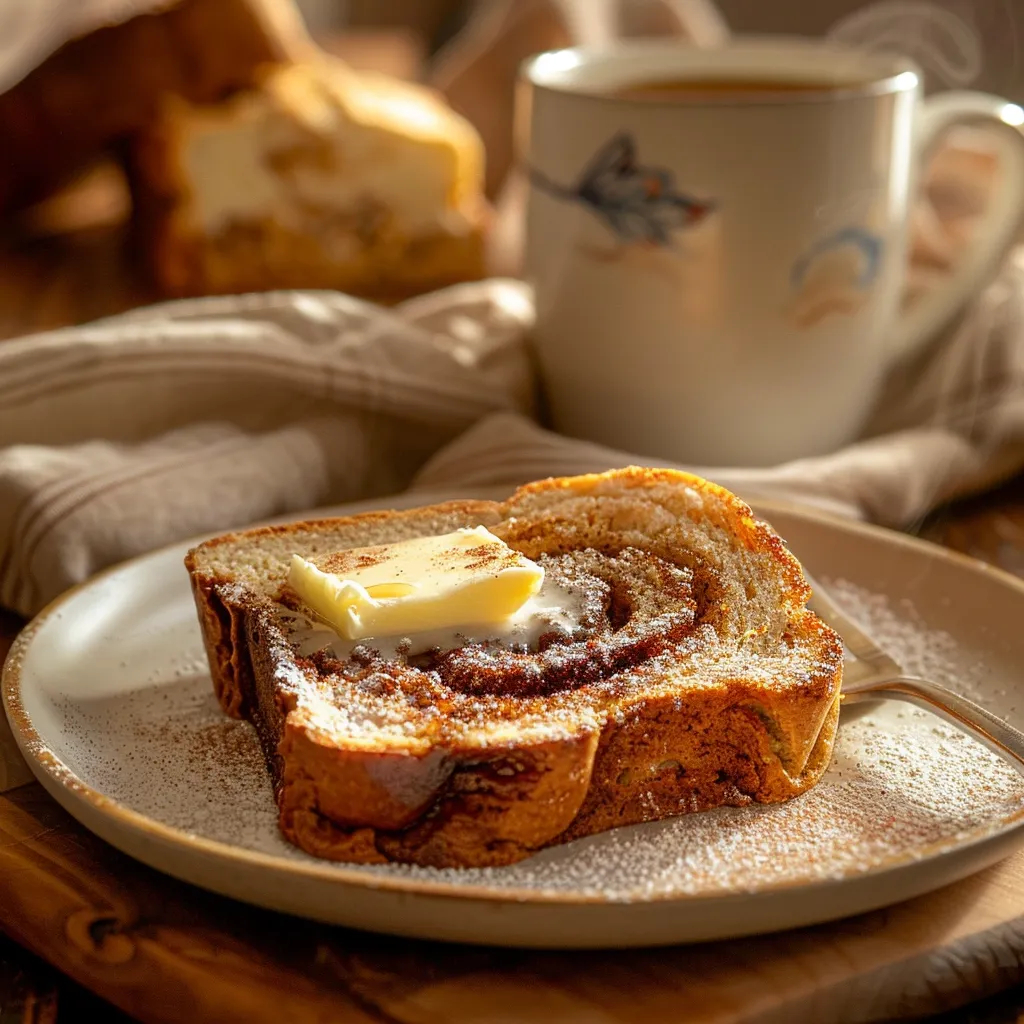
How to Keep It Fresh Longer
Wrap cooled bread tightly in plastic wrap or foil. It stays moist at room temperature for 3-4 days. For longer storage, freeze it.
To freeze, slice first and separate pieces with parchment paper. This way, you can grab single servings whenever cravings hit. Thaw at room temperature or pop slices in the toaster.
Pro tip: If the bread starts drying out, microwave slices for 10 seconds with a damp paper towel. It brings back that fresh-baked softness.
Health Benefits and Nutritional Facts
Moderate Sugar Content
While Amish Cinnamon Bread is sweet, it’s not overly sugary compared to store-bought desserts. One slice has about 15g of sugar – less than most muffins. The cinnamon also helps balance blood sugar levels naturally.
For a healthier twist, reduce sugar by 1/4 cup. The bread will still taste great since cinnamon adds natural sweetness. You can also try coconut sugar for a lower glycemic option.
Whole Wheat Option for Fiber
Swap half the white flour for whole wheat to boost fiber. This change adds nutrients while keeping the bread soft. The nutty flavor pairs perfectly with cinnamon too.
Each serving then gives you 3g of fiber – good for digestion. Plus, whole grains keep you full longer, making it a smarter breakfast choice.
Here’s the basic nutrition per slice:
- Calories: 180
- Carbs: 28g
- Protein: 3g
- Fat: 6g
FAQs About Amish Cinnamon Bread
Can I Freeze Amish Cinnamon Bread?
Absolutely! Wrap the whole loaf or individual slices tightly in plastic wrap. Then place in freezer bags. It keeps well for 3 months. Thaw at room temperature when ready to eat.
Why Does My Bread Sink in the Middle?
This usually happens if the bread isn’t fully baked. Next time, test with a toothpick – no crumbs should stick. Also, check your baking soda isn’t expired, as fresh leavening helps the bread rise properly.
Can I Use Yogurt Instead of Buttermilk?
Yes! Plain yogurt works fine. Thin it with a little milk to match buttermilk’s consistency. Greek yogurt makes a thicker batter, so add extra milk if needed.
How Long Does It Stay Fresh?
At room temperature, it stays moist for 3-4 days in an airtight container. For longer freshness, refrigerate for up to 1 week. The cold makes it a bit denser, but toasting fixes that.
Can I Make This in a Bundt Pan?
Sure! Just adjust baking time – start checking at 45 minutes. The center should spring back when lightly pressed. A Bundt pan gives pretty presentation with the cinnamon swirls visible.
Storage questions? We cover similar tips in How to Make Banana Bread Cinnamon Rolls
Conclusion and Final Tips
Why This Recipe is a Keeper
Amish Cinnamon Bread has stood the test of time for good reason. It’s simple to make, uses basic ingredients, and fills your home with the most amazing smell. Whether you’re baking for family or sharing with friends, this bread always brings smiles.
The best part? You can make it your own. Add nuts, try different sugars, or even mix in some apple chunks. No matter how you tweak it, the result is always comforting and delicious.
Encouragement to Try Baking
Don’t be intimidated if you’re new to baking. This recipe is foolproof when you follow the steps. Just remember:
- Don’t overmix the batter
- Check your oven temperature
- Let it cool before slicing
Once you taste that first warm slice, you’ll understand why generations have loved this bread. So grab your mixing bowl – your kitchen is about to smell incredible!
Looking for more cooking inspiration and helpful tips? Follow me on Facebook and Instagram for daily recipes, cooking tricks, and much more!
Print
Amish Cinnamon Bread: A Classic Recipe with Rich History
- Total Time: 65-75 minutes
- Yield: 1 loaf 1x
Description
A warm, sweet, and comforting Amish Cinnamon Bread with a soft texture and rich cinnamon swirl, perfect for breakfast or dessert.
Ingredients
- 3 cups all-purpose flour (sifted)
- 2 cups sugar
- 2 large eggs (room temperature)
- 1 cup buttermilk
- 2 tbsp cinnamon
- ½ cup melted unsalted butter
- 1 tsp baking soda
- 1 tsp vanilla extract
Instructions
- Preheat the oven to 350°F (175°C). Grease a loaf pan.
- In a large bowl, mix flour, sugar, and baking soda.
- In another bowl, beat eggs lightly and add buttermilk, melted butter, and vanilla.
- Combine the wet and dry ingredients, stirring until just mixed.
- In a small bowl, mix ¼ cup sugar with 1 tbsp cinnamon.
- Pour half of the batter into the loaf pan, then sprinkle half the cinnamon sugar mixture over it.
- Add the remaining batter and top with the rest of the cinnamon sugar.
- Use a knife to swirl the cinnamon sugar for a marbled effect.
- Bake for 50-60 minutes or until a toothpick inserted comes out clean.
- Let cool in the pan for 10 minutes before transferring to a wire rack.
Notes
For extra flavor, try adding nuts or raisins to the batter. If the bread browns too quickly, tent with foil while baking.
- Prep Time: 15 minutes
- Cook Time: 50-60 minutes
- Category: Bread
- Method: Baking
- Cuisine: Amish
Nutrition
- Serving Size: 1 slice
- Calories: 180
- Sugar: 15g
- Sodium: 150mg
- Fat: 6g
- Saturated Fat: 3g
- Unsaturated Fat: 2g
- Trans Fat: 0g
- Carbohydrates: 28g
- Fiber: 1g
- Protein: 3g
- Cholesterol: 35mg
Keywords: Amish cinnamon bread, cinnamon swirl bread, easy quick bread
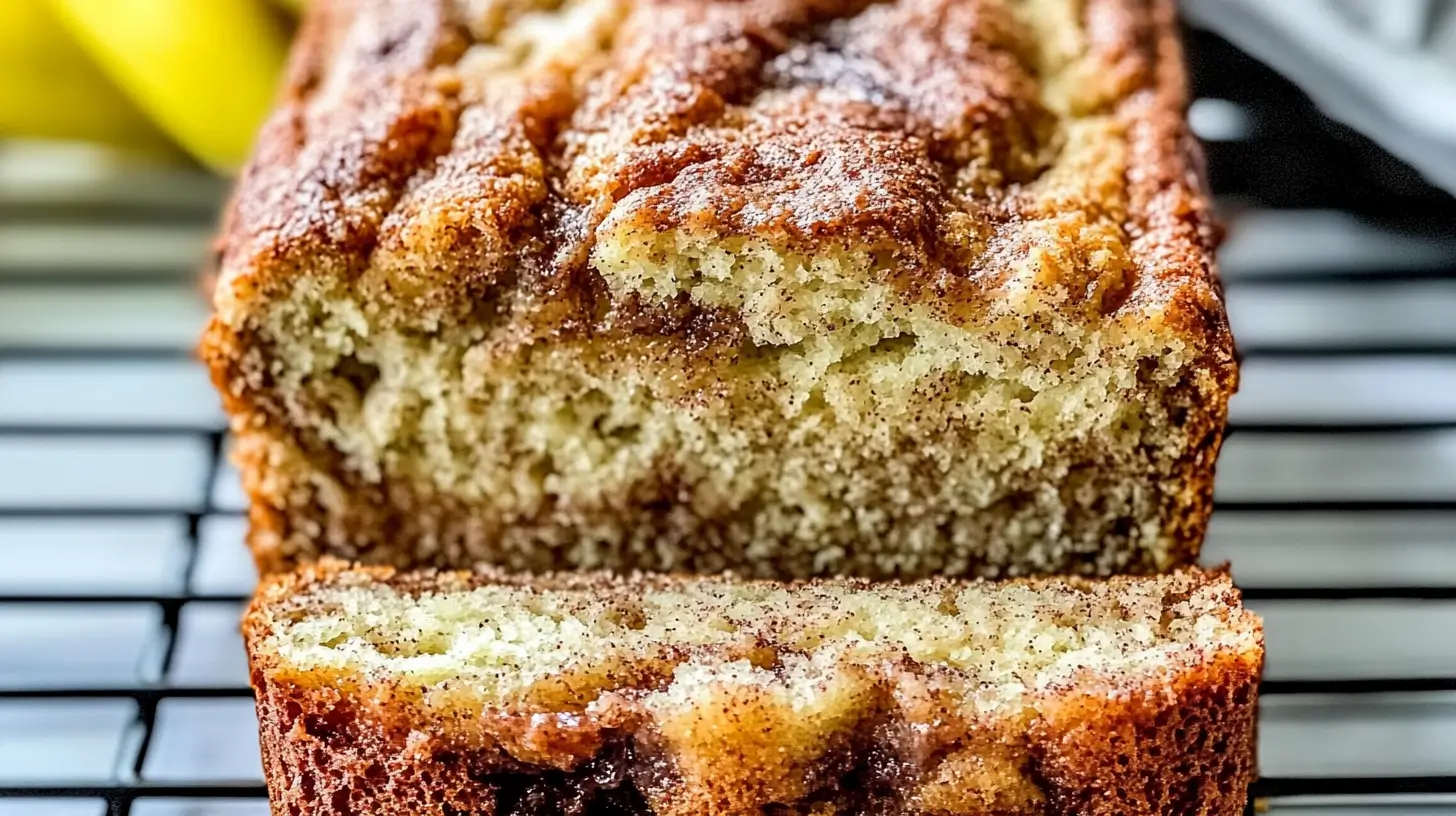
7 thoughts on “Amish Cinnamon Bread: A Classic Recipe with Rich History”